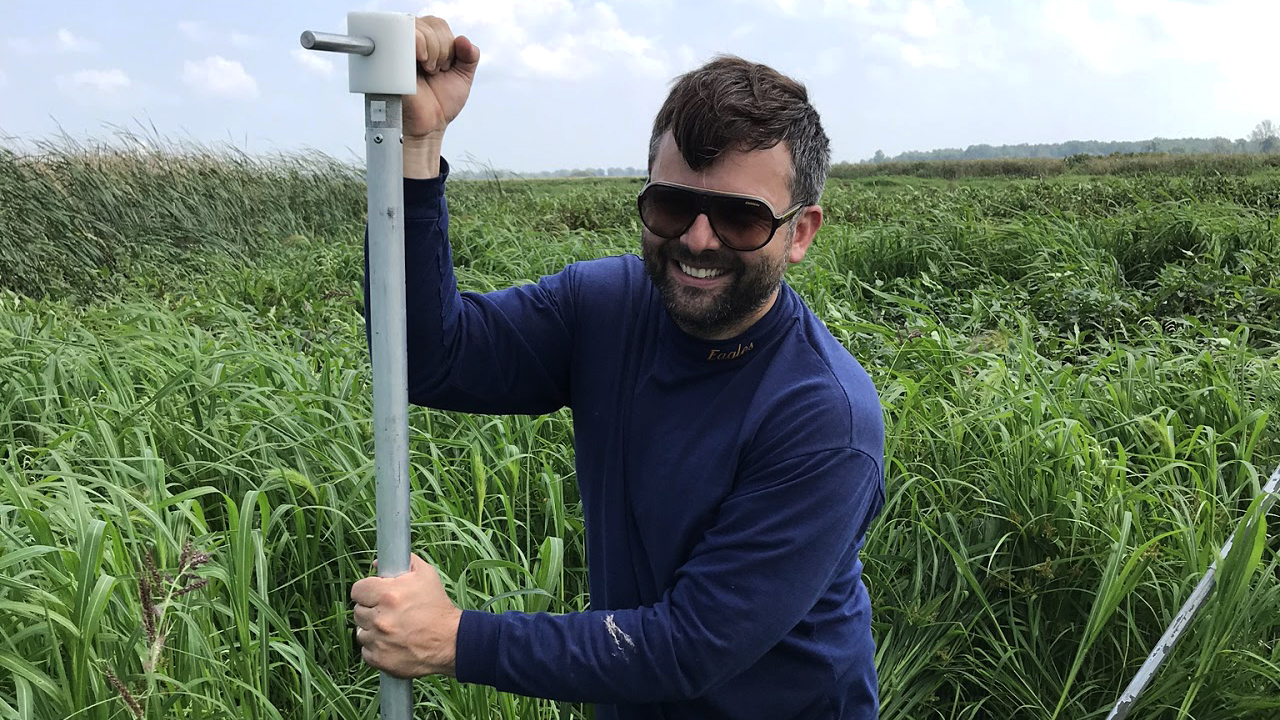- YouTube
- TikTok
OU professor reconstructs past hurricanes to study impact on coastal environments

Hurricane season is underway, and Oakland University Professor Thomas Bianchette has been busy studying the storms and the damage they can cause on coastal environments.
“Much of my work has been under the umbrella of the burgeoning field of Paleotempestology, which focuses on the reconstruction of past hurricanes through the use of proxy evidence,” said Bianchette, an assistant professor in the Department of Chemistry at Oakland University. “A crucial aspect of this research is to analyze the geological impacts of modern storms.
“Paleotempestological research is important in hurricane-prone coastal areas across the globe,” he added. “For instance, for the Atlantic Basin — including the Gulf of Mexico — historical (instrumental) hurricane records only go back to the 1850s. Therefore, scientists, residents, policy-makers, and stakeholders do not know much about storm periodicity before this period. For the Eastern North Pacific Basin, which includes western Mexico and the areas of Acapulco, Cabo San Lucas and Puerto Vallarta, the instrumental period only extends back to the 1940s, with only sparse records before then.”
Dr. Bianchette’s research primarily focuses on reconstructing paleoenvironments with a focus on natural hazards, specifically hurricanes, tsunamis and river floods. He has performed fieldwork along the U.S. Gulf coast, Mexico, the Bahamas, and the Dominican Republic.
“My newest research, which is very interesting, is attempting to reconstruct flood histories off of the margins of the Great Lakes,” he said. “I have been working along the margins of Lake Erie in Northwest Ohio for about three years.
“The Great Lakes, believe it or not, receive many storms with similar characteristics and behaviors as hurricanes,” Bianchette added. “They cause flooding and erosion; and businesses, residents, policymakers, scientists and stakeholders would be interested in understanding the history and frequency of these flood events.”
With the National Oceanic and Atmospheric Administration (NOAA) predicating an active hurricane season for the Atlantic — with the potential for six to 10 hurricanes, including three to five major hurricanes — Dr. Bianchette expects the storms and the damage they can cause on coastal environments to generate significant interest from researchers, including OU students.
“Students enjoy work in this field because there is something for everyone,” he said. “The geology-minded students love the fieldwork and sedimentological techniques to discover evidence of storms, such as finding thin sand layers deposited into a coastal site from storm surge. Students with an interest in biology love to look in the microscope for diatoms or other evidences of saltwater intrusion.
“Students that love chemistry love to analyze the chemical composition of sediments to detect evidence of river floods or storm surge intrusion,” Bianchette added. “Students also may have interest in the long-term future and sustainability of these vulnerable coastal areas, including policy measures to help protect them.”
To learn more about Dr. Bianchette’s work, including student research opportunities, visit the Coastal Hazard and Environmental Reconstruction Lab.


 June 28, 2021
June 28, 2021